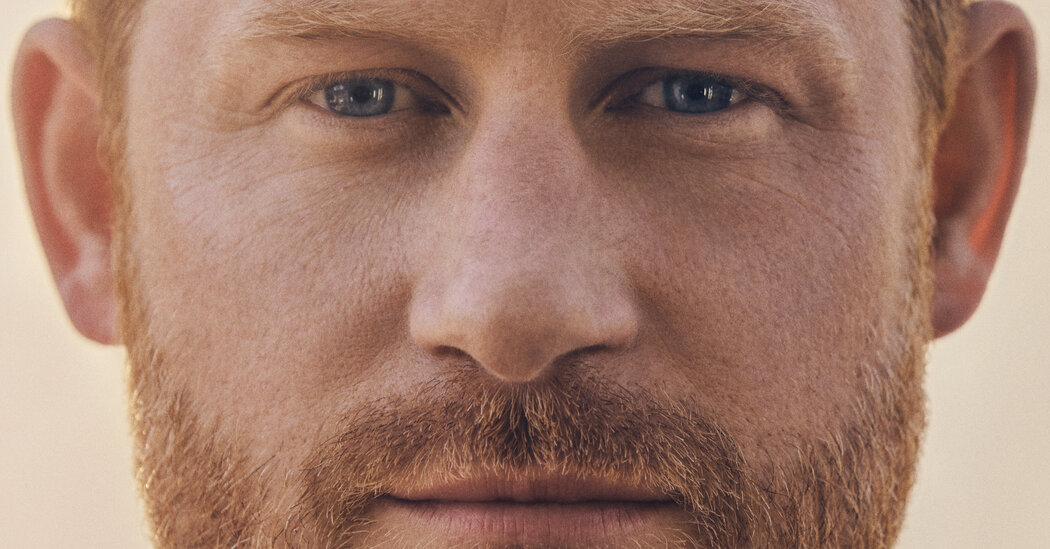
If Harry is bidding to position himself, like his mother before him, as the people’s prince, this is his heraldic banner. That is, after all, the premise of the book — that is, a portrait created, he said, not as “the prince I was born but as the man I have become.”
More on the British Royal Family
So there he is: the man he has become. For all to see.
The photo positions Harry in the most accessible, uncostumed way possible, which is, of course, a kind of costume in itself — just like us, as opposed to just like his family. It is different from King Charles’s recent biography, “The King: The Life of Charles III,” which captures the king in a double-breasted suit and striped tie, pocket hankie at the ready, or even the most recent Harry and Meghan book, “Finding Freedom,” which depicted the prince in a dove-gray suit alongside his wife. Rather, on his own book cover, Harry is stripped, if not bare, as close to it as is appropriately possible.
His face is unadorned, save for his beard, which we now know, thanks to his ITV interview with the British journalist Tom Bradby, was the source of brotherly strife, but which was important because, Harry said, it represented “the new Harry.” The only decorative element is the leather necklace, which given the revelation that William pushed Harry down during a tiff in Nottingham Cottage and ripped his necklace, suddenly seems like an Easter egg, freighted with symbolism.
Harry is not smiling, not gazing off into the sunset or the future or the heavens, not contemplating his own inner thoughts, like many such photos on other recent best-selling memoirs, be it Michelle Obama’s “Becoming,” Barack Obama’s “A Promised Land” or Edward Enninful’s “A Visible Man” (though, as Matt Dorfman, the art director of The New York Times Book Review, pointed out, the simplicity of the typography reflects a similar straightforward design). Instead, Harry seems to be fully present, with no scrim between himself and the reader. The impression is one of immediacy. Of nothing to hide.
Given the speculation that he considered softening the tone of the memoir after the death of Queen Elizabeth II, the look serves as a counter-thrust: a visual implication that what is inside will be equally unfiltered.






